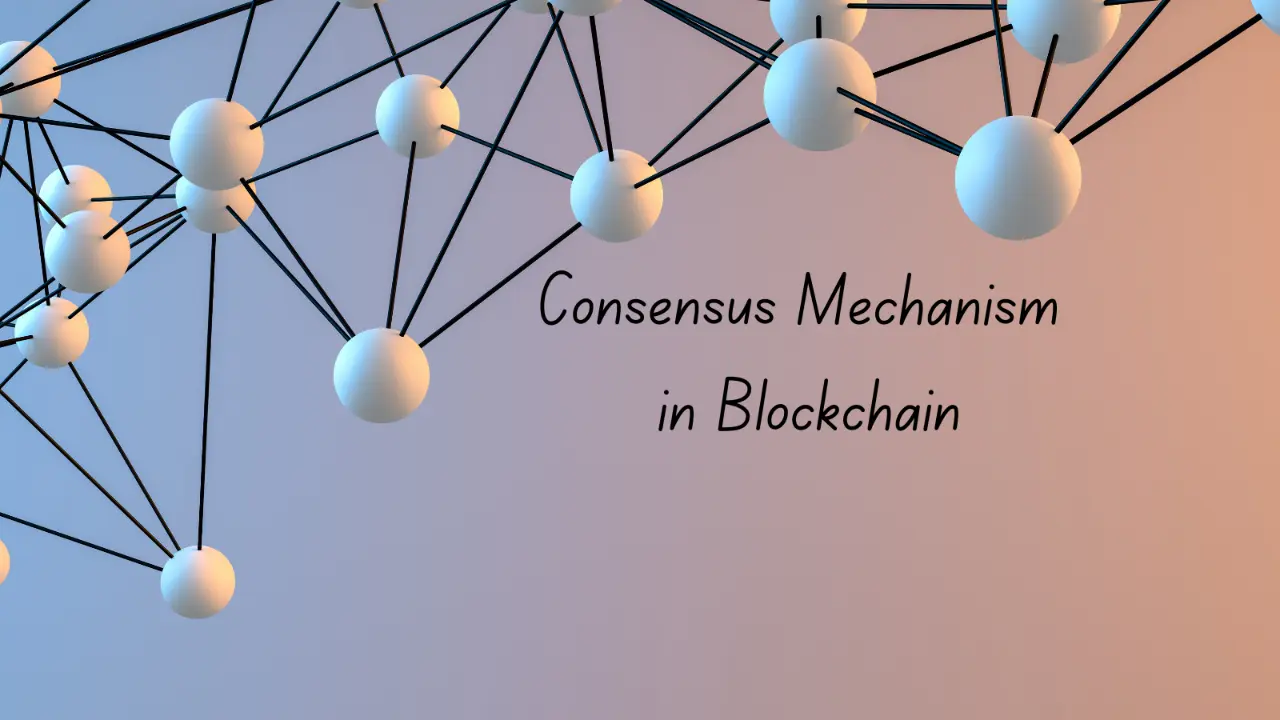In the digital era, blockchain technology has emerged as a revolutionary concept, transforming various industries with its decentralized, secure, and transparent way of recording transactions. At the heart of this transformation is the consensus mechanism, a critical component that ensures the integrity and security of the network. This blog will delve into what a consensus mechanism is, its various types, and its importance in the blockchain ecosystem.
What is a Consensus Mechanism?
A consensus mechanism in blockchain is a fault-tolerant process used in blockchain systems to achieve the necessary agreement on a single data value or a single network state among distributed processes or systems. It ensures that all nodes in the blockchain network are synchronized and agree on the validity of transactions. The consensus mechanism is crucial because it prevents double-spending, ensures the blockchain’s consistency, and maintains the network’s security.
Types of Consensus Mechanisms
Proof of Work (PoW)
Proof of Work (PoW) is one of the most well-known consensus mechanisms initially implemented by Bitcoin. In PoW, miners compete to solve complex mathematical puzzles using their computational power. The first miner to solve the puzzle gets the right to add the next block to the blockchain and is rewarded with cryptocurrency. This process is energy-intensive and requires significant computational resources.
Advantages of PoW:
– High security due to the computational effort required to alter the blockchain.
– Proven track record with Bitcoin and other cryptocurrencies.
Disadvantages of PoW:
– High energy consumption, leading to environmental concerns.
– Scalability issues due to the time and resources required to solve puzzles.
Proof of Stake (PoS)
Proof of Stake (PoS) is an alternative to PoW, designed to be more energy-efficient. In PoS, validators are chosen to create new blocks based on the number of coins they hold and are willing to “stake” as collateral. The higher the stake, the greater the chances of being selected to validate transactions and add new blocks to the blockchain. This mechanism reduces the need for extensive computational power.
Advantages of PoS:
– Lower energy consumption compared to PoW.
– Faster transaction processing and scalability.
Disadvantages of PoS:
– Potential for centralization if a few validators hold a majority of the stake.
– Security concerns related to the “nothing at stake” problem.
Delegated Proof of Stake (DPoS)
Delegated Proof of Stake (DPoS) is a variant of PoS where stakeholders elect a small number of delegates to validate transactions and maintain the blockchain. This consensus mechanism aims to enhance the efficiency and speed of the network while preserving decentralization. Delegates are incentivized to act in the network’s best interest, as they can be voted out if they fail to perform their duties.
Advantages of DPoS:
– Higher scalability and faster transaction times.
– Enhanced security through a democratic voting system.
Disadvantages of DPoS:
– Potential centralization if a few delegates dominate the network.
– Risk of collusion among delegates.
Other Consensus Mechanisms
Beyond PoW, PoS, and DPoS, there are several other notable consensus mechanisms, each with its unique approach and use cases:
Practical Byzantine Fault Tolerance (PBFT):
– Used in permissioned blockchains.
– Ensures consensus even if some nodes act maliciously.
Proof of Authority (PoA):
– Validators are chosen based on their reputation.
– Suitable for private blockchains where trust is established.
How Consensus Mechanisms Work
Consensus mechanisms ensure that all blockchain network nodes agree on the validity of transactions and the ledger’s state. Here’s a general outline of how they work:
Transaction Proposal: A user proposes a transaction.
Validation: Nodes in the network validate the transaction using the consensus mechanism.
Agreement: The consensus mechanism ensures that most nodes agree on the transaction’s validity.
Block Creation: A new block is created and added to the blockchain.
Propagation: The new block is propagated across the network, ensuring all nodes update their ledgers.
This process ensures the blockchain remains consistent, secure, and free from tampering or fraud.
Importance of Consensus Mechanisms in Blockchain
Consensus mechanisms are vital for several reasons:
– Decentralization: They eliminate the need for a central authority, allowing peer-to-peer transactions.
– Security: They protect the blockchain from attacks and fraud by ensuring agreement among distributed nodes.
– Trust: They provide a trustless environment where transactions are verified by the network rather than a single entity.
– Integrity: They maintain the accuracy and consistency of the blockchain, preventing double-spending and other issues.
Blockchain networks would struggle to function effectively without consensus mechanisms, losing their core advantages of decentralization and security.
Challenges and Future of Consensus Mechanisms
Despite their critical role, consensus mechanisms face several challenges:
Scalability: Many consensus mechanisms need help to handle a high volume of transactions efficiently.
Energy Consumption: PoW, in particular, is criticized for its high energy usage.
Centralization Risks: Some mechanisms, like PoS and DPoS, can lead to centralization if not correctly managed.
Addressing these challenges is the future of consensus mechanisms. Innovations such as sharding, hybrid consensus models, and advancements in cryptographic techniques aim to improve scalability, reduce energy consumption, and maintain decentralization.
Proof of Nexus:
In Proof of Nexus (PON), validators are selected based on 5 parameters, and nodes are selected randomly. This random selection protects the blockchain ecosystem from Sybil’s attack and 51% attack.
Conclusion
In conclusion, consensus mechanisms are the backbone of blockchain technology, ensuring that distributed networks operate securely, efficiently, and without central oversight. From Proof of Work to Proof of Stake and beyond, these mechanisms offer unique advantages and face distinct challenges. As blockchain technology continues to evolve, so will the consensus mechanisms underpinning it, driving further innovation and adoption in the digital age.
By understanding the intricacies of consensus mechanisms, we can better appreciate their role in the blockchain ecosystem and their impact on the future of decentralized technology.
